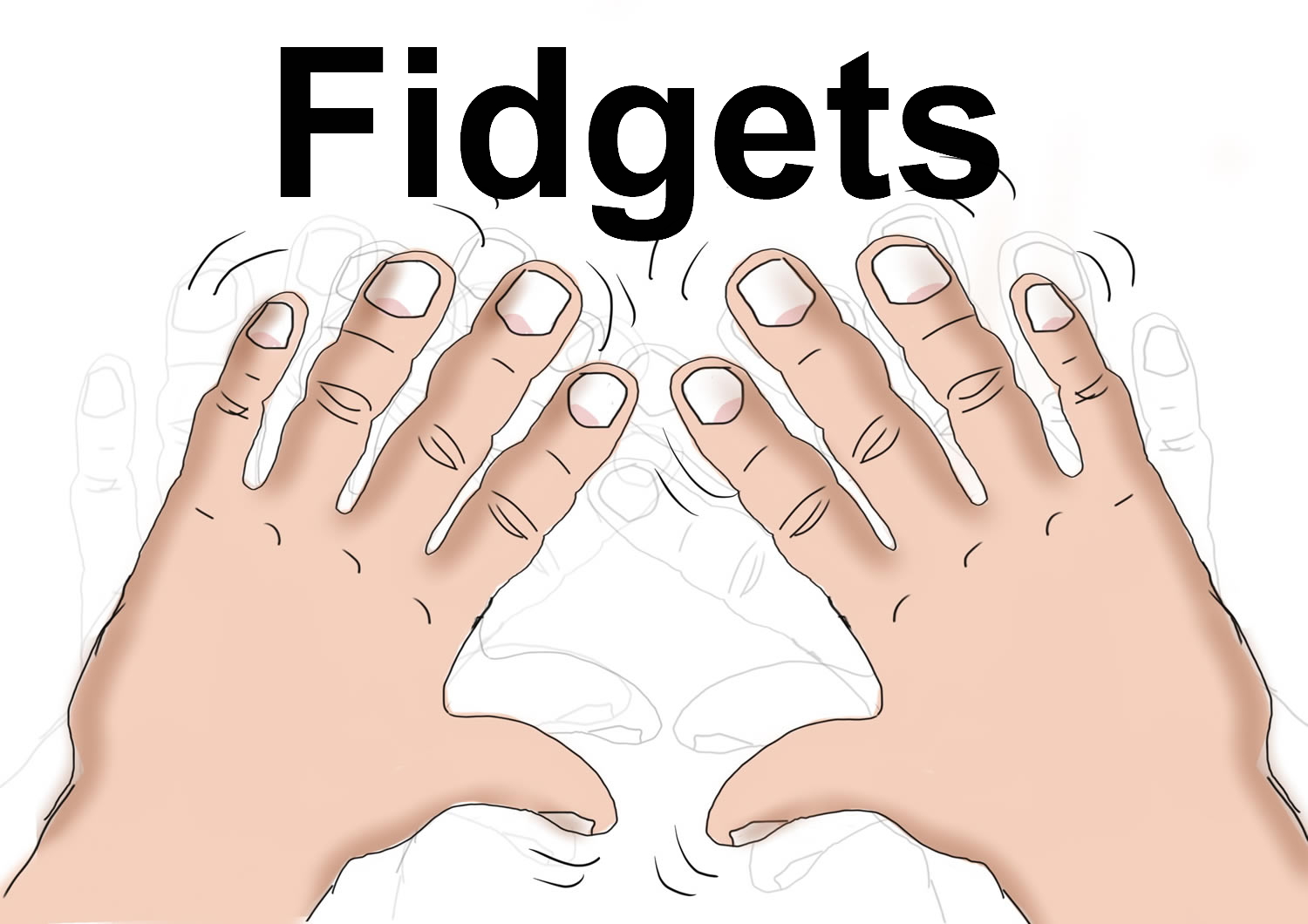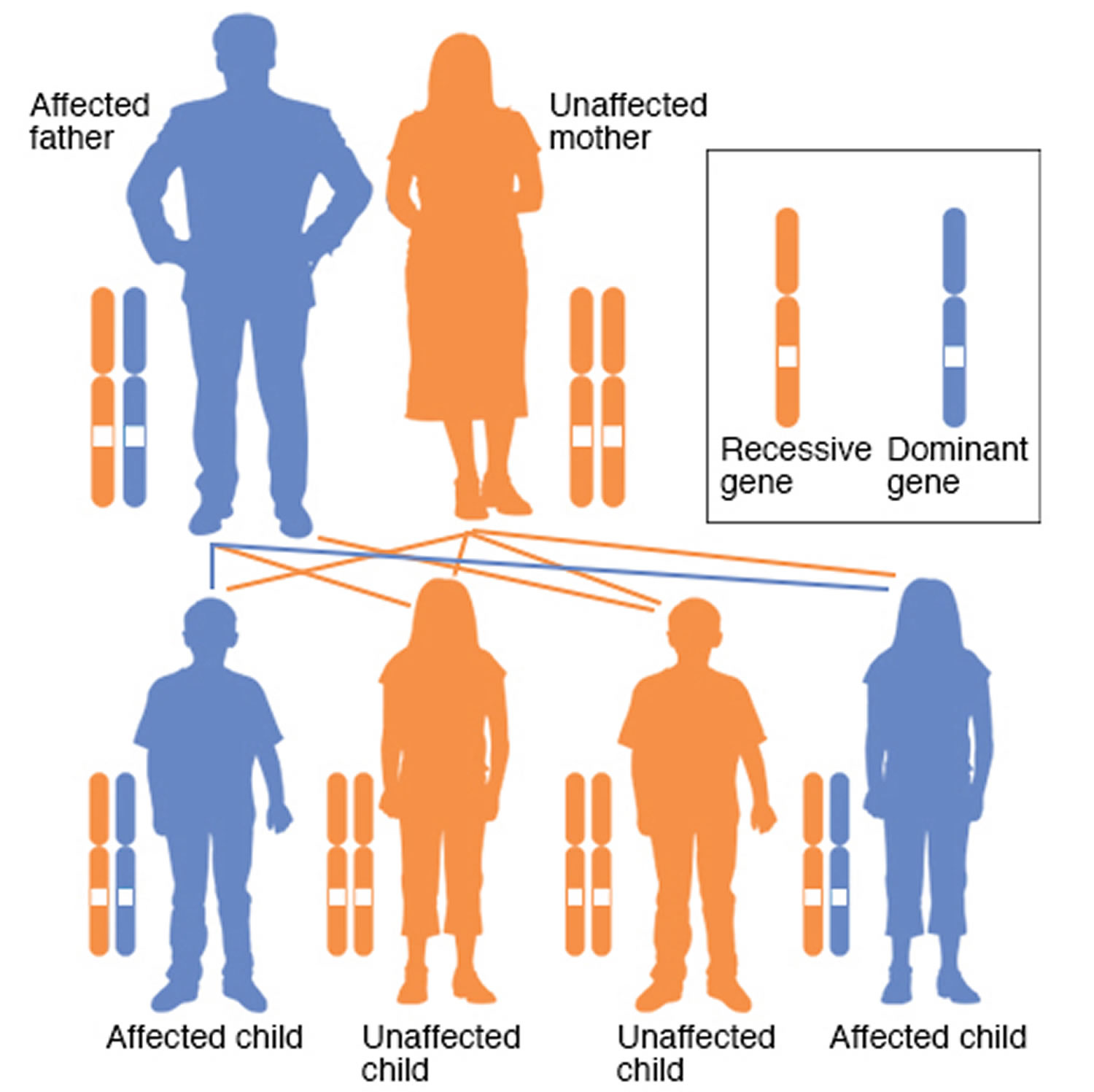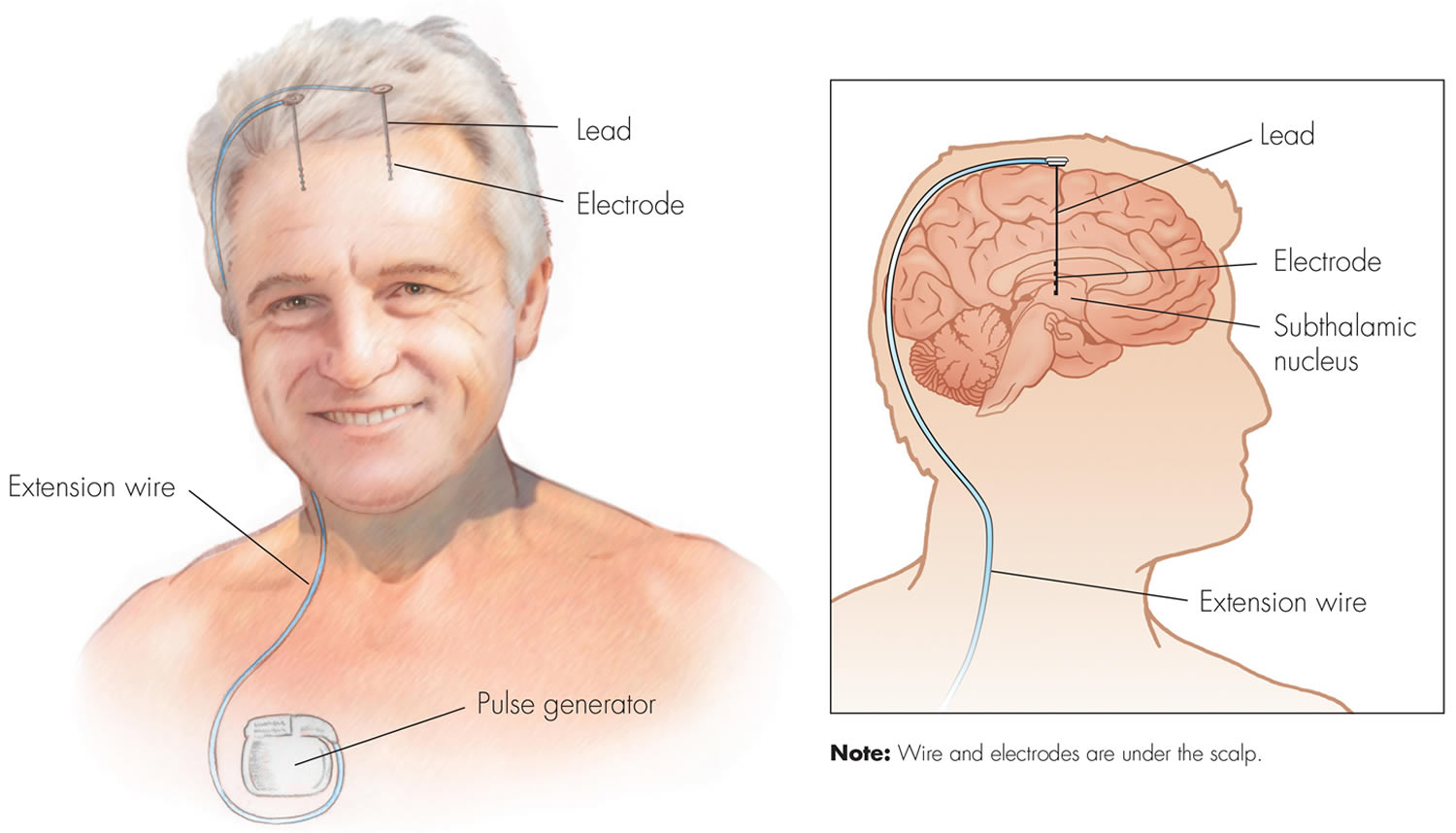Contents
- What are fidgets ?
- What is Essential Tremor
- What is Attention-Deficit and Hyperactivity Disorder (ADHD)
What are fidgets ?
Fidgets is defined as a condition of vague physical uneasiness, seeking relief in irregular body movements. And to fidget is to move about restlessly or uneasily. It is not uncommon to see person sitting at rest, perhaps reading, who frequently changes the position of his leg crossing and uncrossing them, without being conscious of the movements. However, fidgets could also be a sign of attention-deficit and hyperactivity disorder (ADHD) 1 or essential tremor 2.
What is Essential Tremor
Essential tremor (previously called benign essential tremor) is a nervous system (neurological) disorder that causes involuntary movement and rhythmic shaking. Tremor is an unintentional, somewhat rhythmic, muscle movement involving to-and-fro movements (oscillations) of one or more parts of the body. Essential tremor can affect almost any part of your body, but the trembling occurs most often in your hands — especially when you do simple tasks, such as drinking from a glass, eating, writing, sewing, or tying shoelaces.
Essential tremor is the most common form of abnormal tremor. (In some people, tremor is a symptom of a neurological disorder or appears as a side effect of certain drugs.) Other conditions don’t cause essential tremor, although essential tremor sometimes confused with Parkinson’s disease.
Essential tremor may be mild and nonprogressive in some people, in others the tremor is slowly progressive, starting on one side of the body but eventually affecting both sides 3.
Although the hand tremor is most common, head, arms, voice, tongue, legs, and trunk may also be involved. Head tremor may be seen as a “yes-yes” (up and down) or “no-no” (side to side) motion. Essential tremor may also be accompanied by mild gait disturbance. Heightened emotion, stress, fever, physical exhaustion, or low blood sugar may trigger tremors or increase their severity.
There may be mild degeneration in the certain parts of the cerebellum in persons with essential tremor. Onset is most common after age 40, although symptoms can appear at any age. Children of a parent who has essential tremor have up to a 50 percent chance of inheriting the condition. Essential tremor is not associated with any known pathology.
Essential tremor has no identified cause. Involuntary means you shake without trying to do so and are not able to stop the shaking at will 2.
Essential tremor vs. Parkinson’s disease
Many people associate tremors with Parkinson’s disease, but the two conditions differ in key ways:
- Timing of tremors. Essential tremor of the hands usually occurs when you use your hands. Tremors from Parkinson’s disease are most prominent when your hands are at your sides or resting in your lap.
- Associated conditions. Essential tremor doesn’t cause other health problems, but Parkinson’s disease is associated with stooped posture, slow movement and shuffling gait. However, people with essential tremor sometimes develop other neurological signs and symptoms, such as an unsteady gait (ataxia).
- Parts of body affected. Essential tremor mainly involves your hands, head and voice. Parkinson’s disease tremors usually start in your hands, and can affect your legs, chin and other parts of your body.
Prognosis of Essential tremor
Although essential tremor is not life-threatening, it can make it harder to perform daily tasks and is embarrassing to some people. Tremor frequency may decrease as the person ages, but the severity may increase, affecting the person’s ability to perform certain tasks or activities of daily living. In many people the tremor may be mild throughout life.
If the tremors become severe, you might find it difficult to:
- Hold a cup or glass without spilling
- Eat normally
- Put on makeup or shave
- Talk, if your voice box or tongue is affected
- Write legibly
Causes of Essential tremor
Essential tremor is the most common type of tremor. Everyone has some tremor, but the movements are often so small that they can’t be seen. Essential tremor affects both men and women. It is most common in people older than 65 years.
The exact cause of essential tremor is unknown. Research suggests that the part of the brain that controls muscle movements does not work correctly in people with essential tremor.
About half of essential tremor cases appear to result from a genetic mutation, although a specific gene hasn’t been identified. If an essential tremor occurs in more than one member of a family, it is called a familial tremor. This type of essential tremor is passed down through families (inherited). This suggests that genes play a role in its cause.
Familial tremor is usually a dominant trait. This means that you only need to get the gene from one parent to develop the tremor. It often starts in early middle age, but may be seen in people who are older or younger, or even in children.
Autosomal dominant inheritance pattern
In an autosomal dominant disorder, the mutated gene is a dominant gene located on one of the nonsex chromosomes (autosomes). You need only one mutated gene to be affected by this type of disorder. A person with an autosomal dominant disorder — in this case, the father — has a 50 percent chance of having an affected child with one mutated gene (dominant gene) and a 50 percent chance of having an unaffected child with two normal genes (recessive genes).
Figure 1. Familial tremor mode of inheritance
Risk factors for essential tremor
Known risk factors for essential tremor include:
- Genetic mutation. The inherited variety of essential tremor (familial tremor) is an autosomal dominant disorder. A defective gene from just one parent is needed to pass on the condition.
If you have a parent with a genetic mutation for essential tremor, you have a 50 percent chance of developing the disorder yourself.
- Age. Essential tremor is more common in people age 40 and older.
Symptoms and signs of Essential tremor
Essential tremor signs and symptoms:
- Begin gradually, usually on one side of the body
- Worsen with movement
- Usually occur in the hands first, affecting one hand or both hands
- Can include a “yes-yes” or “no-no” motion of the head
- May be aggravated by emotional stress, fatigue, caffeine or temperature extremes
Diagnosis of essential tremor
Diagnosing essential tremor involves reviewing your medical history, family history and symptoms and conducting a physical examination.
There are no medical tests to diagnose essential tremor. Diagnosing it is often a matter of ruling out other conditions that could be causing your symptoms. To do this, your doctor may suggest the following tests:
Neurological examination
In a neurological examination, your doctor surveys your nervous system functioning, including checking your:
- Tendon reflexes
- Muscle strength and tone
- Ability to feel certain sensations
- Posture and coordination
- Gait
Laboratory tests
Your blood and urine may be tested for several factors, including:
- Thyroid disease
- Metabolic problems
- Drug side effects
- Alcohol levels
- Levels of chemicals that may cause tremor
Performance tests
To evaluate the tremor itself, your doctor may ask you to:
- Drink from a glass
- Hold your arms outstretched
- Write
- Draw a spiral (see Figure 2 below)
If your doctor is still unsure if your tremor is essential tremor or Parkinson’s disease, he or she might order a dopamine transporter scan. This can tell the difference between the two types of tremor.
Essential tremor test
One test used to evaluate essential tremor involves having you draw a spiral. The spiral on the left was drawn by a hand affected by essential tremor. The spiral on the right was drawn by an unaffected hand.
Figure 2. Essential tremor test

Treatment of Essential tremor
There is no definitive cure for essential tremor.
Some people with essential tremor don’t require treatment if their symptoms are mild. But if your essential tremor is making it difficult to work or perform daily activities, discuss treatment options with your doctor.
Symptomatic drug therapy may include propranolol or other beta blockers and primidone, an anticonvulsant drug. Eliminating tremor “triggers” such as caffeine and other stimulants from the diet is often recommended. Physical and occupational therapy may help to reduce tremor and improve coordination and muscle control for some individuals. Deep brain stimulation uses a surgically implanted, battery-operated medical device called a neurostimulator to delivery electrical stimulation to targeted areas of the brain that control movement, temporarily blocking the nerve signals that cause tremor. Other surgical intervention is effective but may have side effects.
Lifestyle and home remedies
To reduce or relieve tremors:
- Avoid caffeine. Caffeine and other stimulants can increase tremors.
- Use alcohol sparingly, if at all. Some people notice that their tremors improve slightly after they drink alcohol, but drinking isn’t a good solution. Tremors tend to worsen once the effects of alcohol wear off. Also, increasing amounts of alcohol eventually are needed to relieve tremors, which can lead to alcoholism.
- Learn to relax. Stress and anxiety tend to make tremors worse, and being relaxed may improve tremors. Although you can’t eliminate all stress from your life, you can change how you react to stressful situations using a range of relaxation techniques, such as massage or meditation.
Make lifestyle changes. Use the hand less affected by tremor more often. Find ways to avoid writing with the hand affected by tremor, such as using online banking and debit cards instead of writing checks.
Severe tremors make it harder to do daily activities. You may need help with these activities. Things that can help include:
- Buying clothes with Velcro fasteners, or using button hooks
- Cooking or eating with utensils that have a larger handle
- Using straws to drink
- Wearing slip-on shoes and using shoehorns
Try voice-activated dialing on your cellphone and speech-recognition software on your computer.
Coping and support
For many people, essential tremor can have serious social and psychological consequences. If the effects of essential tremor make it difficult to live your life as fully as you once did, consider joining a support group.
Support groups aren’t for everyone, but you might find it helpful to have the encouragement of people who understand what you’re going through. Or see a counselor or social worker who can help you meet the challenges of living with essential tremor.
Medications
Beta blockers. Normally used to treat high blood pressure, beta blockers such as propranolol (Inderal) help relieve tremors in some people. Beta blockers may not be an option if you have asthma or certain heart problems. Side effects may include fatigue, lightheadedness, stuffy nose, or slow heartbeat and it may make asthma worse.
Anti-seizure medications. Epilepsy drugs, such as primidone (Mysoline), may be effective in people who don’t respond to beta blockers. Other medications that might be prescribed include gabapentin (Gralise, Neurontin) and topiramate (Topamax, Qudexy XR). Side effects include drowsiness, problems concentrating, nausea, and problems with walking, balance, and coordination. Drowsiness and nausea usually disappear within a short time.
Tranquilizers. Doctors may use drugs such as alprazolam (Xanax) and clonazepam (Klonopin) to treat people for whom tension or anxiety worsens tremors. Side effects can include fatigue or mild sedation. These medications should be used with caution because they can be habit-forming.
OnabotulinumtoxinA (Botox) injections. Botox injections might be useful in treating some types of tremors, especially head and voice tremors. Botox injections can improve tremors for up to three months at a time.
However, if Botox is used to treat hand tremors, it can cause weakness in your fingers. If it’s used to treat voice tremors, it can cause a hoarse voice and difficulty swallowing.
Therapy
Doctors might suggest physical or occupational therapy. Physical therapists can teach you exercises to improve your muscle strength, control and coordination.
Occupational therapists can help you adapt to living with essential tremor. Therapists might suggest adaptive devices to reduce the effect of tremors on your daily activities, including:
- Heavier glasses and utensils
- Wrist weights
- Wider, heavier writing tools, such as wide-grip pens
Surgery
Deep brain stimulation might be an option if your tremors are severely disabling and you don’t respond to medications.
In deep brain stimulation, doctors insert a long, thin electrical probe into the portion of your brain that causes your tremors (thalamus). A wire from the probe runs under your skin to a pacemaker-like device (neurostimulator) implanted in your chest. This device transmits painless electrical pulses to interrupt signals from your thalamus that may be causing your tremors.
Side effects of surgery can include equipment malfunction; problems with motor control, speech or balance; headaches; and weakness. Side effects often go away after some time or adjustment of the device.
Or
Stereotactic radiosurgery or Gamma Knife. Stereotactic radiosurgery is a form of radiation therapy that focuses high-power X-ray energy on a small area of the brain. Despite its name, radiosurgery is a treatment, not a surgical procedure. Incisions (cuts) are not made on your body.
Radiosurgery may damage tissue around the area being treated. As compared to other types of radiation therapy, Gamma Knife treatment is much less likely to damage nearby healthy tissue.
Brain swelling may occur. Swelling usually goes away without treatment. Some people need medicine to control this swelling. In rare cases, surgery with incisions (open surgery) is needed to treat the brain swelling caused by the radiation.
The spots where the head frame is attached to your scalp may be red and sensitive after treatment. This should go away with time.
Figure 3. Deep brain stimulation
What is Attention-Deficit and Hyperactivity Disorder (ADHD)
Do you feel that you have struggled throughout your life with poor concentration, inattention, impulsivity, or getting organized ?
Attention-Deficit and Hyperactivity Disorder (ADHD) is defined as a persistent pattern of inattention and/or hyperactivity-impulsivity that interferes with functioning or development.
- Inattention means a person wanders off task, lacks persistence, has difficulty sustaining focus, and is disorganized; these problems are not due to defiance or lack of comprehension.
- Hyperactivity means a person moves about excessively when it is not appropriate, and/or excessively fidgets, taps, or talks. In adults, it may appear as extreme restlessness or wearing others out with their activity.
- Impulsivity means hasty actions that occur in the moment without a person thinking first; or a desire for immediate rewards or inability to delay gratification. Impulsive actions may have high potential for harm. An impulsive person may be socially intrusive and interrupt others excessively or make important decisions without considering the long-term consequences.
Attention-Deficit and Hyperactivity Disorder (ADHD) begins in childhood and is considered a developmental disorder, but a person may not receive a diagnosis until adolescence or adulthood.
To receive a diagnosis of ADHD as an adult:
- Several symptoms must have been present before the age of 12.
- A person must have at least five symptoms of either inattention and/or hyperactivity-impulsivity.
- The symptoms must be present in two or more settings, such as at home and at work.
- There must be evidence that the symptoms interfere with the person’s functioning in these settings.
Several other mental health conditions commonly occur with ADHD, including conduct disorder, learning disorders, anxiety disorders, and depression.
What causes ADHD ?
Scientists are not sure what causes ADHD, although many studies suggest that genes play a large role. Like many other illnesses, ADHD probably results from a combination of factors. In addition to genetics, researchers are looking at possible environmental factors and are studying how brain injuries, nutrition, and the social environment might contribute to ADHD.
What are the symptoms of ADHD ?
A person with inattention often:
- Fails to give close attention to details or makes careless mistakes at work or during other activities
- Has difficulty sustaining attention in tasks, such as during lectures or lengthy reading
- Does not seem to listen when spoken to directly
- Does not follow through on instructions and fails to finish chores or duties in the workplace
- Has difficulty organizing tasks and activities—for example, is messy and has poor time management
- Avoids, dislikes, or is reluctant to engage in tasks that require sustained mental effort
- Loses things necessary for tasks or activities, such as keys, wallets, and mobile phones
- Is easily distracted by unrelated thoughts or stimuli
- Is forgetful in daily activities, such as paying bills, keeping appointments, or returning calls
A person with hyperactivity-impulsivity often:
- Fidgets with or taps hands or feet or squirms in seat
- Leaves seat in situations when remaining seated is expected
- Feels restless or is unable to be still for extended periods of time
- Is unable to engage in leisure activities quietly
- Talks excessively
- Blurts out an answer before a question has been completed
- Has difficulty waiting his or her turn, such as when waiting in line
- Interrupts or intrudes on others
Some people with ADHD primarily have symptoms of inattention, while others have primarily symptoms of hyperactivity-impulsivity. Some people have symptoms in both categories.
Problems with concentration and staying organized can be common for many busy adults; however, an adult who is impaired both at work and at home, or in social situations, is more likely to have ADHD.
How is ADHD in adults diagnosed ?
Adults who suspect they have ADHD should see a licensed mental health professional or doctor, such as a psychologist or psychiatrist who has experience diagnosing ADHD, for an evaluation.
Stress, other mental health conditions, and physical conditions or illnesses can cause similar symptoms to those of ADHD. Some of these include:
- Stress at work or home
- Lack of sleep
- Sleep apnea, a health condition in which a person has one or more pauses in breathing or shallow breaths while sleeping, causing poor sleep quality and daytime sleepiness
- Lack of exercise
- Lack of proper nutrition
- Anxiety
- Depression
- Problems with the thyroid gland, a gland in the neck that makes the thyroid hormone, which controls the body’s metabolism
Therefore, a thorough evaluation will help the doctor find out what is causing the symptoms and recommend effective treatment.
There is no one test that can diagnose ADHD. Mental health professionals use certain rating scales to determine if an adult meets the diagnostic criteria for ADHD.
A thorough evaluation also includes looking at the person’s history of childhood behavior and school experiences. To obtain this information, the doctor may interview spouses or partners, parents, close friends, and other associates.
The person may also undergo a physical exam and various psychological tests that evaluate working memory, executive functioning (abilities like planning and decision-making), and visual and spatial skills or reasoning. The evaluation will also look at the person’s mood and whether he or she struggles with other issues, such as anxiety, depression, or substance abuse. A person’s medical history is also important, as previous health problems, trauma, or injury can also be the cause of symptoms.
How does ADHD affect adults ?
Some children with ADHD continue to have the condition as adults.
Many adults who have ADHD don’t know it. These adults may feel that it is impossible to get organized, stick to a job, or remember to keep appointments. Daily tasks such as getting up in the morning, preparing to leave the house for work, arriving at work on time, and being productive on the job can be especially challenging for adults with undiagnosed ADHD. These adults may have a history of academic problems, problems at work, or difficult or failed relationships. Many have had multiple traffic accidents. Like teens, adults with ADHD may seem restless and may try to do several things at once, most of them unsuccessfully. They also tend to prefer “quick fixes,” rather than taking the steps needed to achieve greater rewards.
A person may not be diagnosed with ADHD until adulthood because the condition was not recognized by teachers or family at a younger age, the person has a mild form of ADHD, or he or she managed fairly without the demands of adulthood. However, it is common for young adults with undiagnosed ADHD to encounter academic problems in college because of the intense concentration required by higher education.
Untreated ADHD in an adult can lead to significant problems with education, social and family situations and relationships, employment, self-esteem, and emotional health. It is never too late to recognize, diagnose, and treat ADHD and any other mental health condition that can commonly occur with it. Effective treatment can improve the lives of many adults and their families.
What are the treatments for ADHD in adults ?
Adults with ADHD can be treated with behavioral interventions, medication, or a combination of the two.
Medications
Stimulants such as methylphenidate and amphetamines are the most common type of medication used for treating ADHD. In addition, a few nonstimulant medications are also available. Although not approved by the U.S. Food and Drug Administration (FDA) specifically for the treatment of ADHD, antidepressants are sometimes used to treat adults with ADHD. An adult who is offered a prescription for a stimulant for ADHD should tell his or her doctor about all other medications that he or she takes. Medications for common adult health problems, such as diabetes, high blood pressure, anxiety, and depression may interact badly with stimulants. In this case, a doctor can offer other medication options.
For general information about stimulants and other medications used for treating mental disorders, see the NIMH Mental Health Medications webpage 4. The FDA website 5 has the latest information on medication approvals, warnings, and patient information guides.
Psychotherapy
Psychotherapy, including cognitive behavioral therapy, can help an adult with ADHD to become more aware of the deficit in attention and concentration and can provide the skills for improving organization and efficiency in daily tasks. It can also address feelings of low self-esteem and help adults with ADHD gain confidence, as well as control impulsive and risky behaviors. A professional counselor or therapist can also help an adult with ADHD learn how to organize his or her life and break large tasks down into smaller, more manageable steps.
Tips to Help Adults with ADHD Stay Organized
A professional counselor or therapist can help an adult with ADHD learn how to organize his or her life with tools such as:
- Keeping routines
- Making lists for different tasks and activities
- Using a calendar for scheduling events
- Using reminder notes
- Assigning a special place for keys, bills, and paperwork
- Breaking down large tasks into more manageable, smaller steps so that completing each part of the task provides a sense of accomplishment.
Where can I turn if I feel alone in my diagnosis of ADHD ?
In addition to the benefits of psychotherapy, adults with ADHD can gain social support and better coping skills by talking with family, friends, and colleagues about their diagnosis. If the people in their lives are aware of their diagnosis, they will better understand their behavior. Psychotherapy for families and couples can help any relationship problems and teach everyone involved about ADHD. There are also support groups just for adults with ADHD.
Some adults also find it helpful to obtain support from a professional life coach or ADHD coach who can help with a variety of skills to improve daily functioning.
- Attention Deficit Hyperactivity Disorder. https://www.nimh.nih.gov/health/topics/attention-deficit-hyperactivity-disorder-adhd/index.shtml/index.shtml[↩]
- Essential tremor. https://medlineplus.gov/ency/article/000762.htm[↩][↩]
- Essential Tremor Information Page. https://www.ninds.nih.gov/Disorders/All-Disorders/Essential-Tremor-Information-Page[↩]
- http://www. nimh.nih.gov/health/topics/mental-health-medications/ index.shtml[↩]
- http://www.fda.gov[↩]







